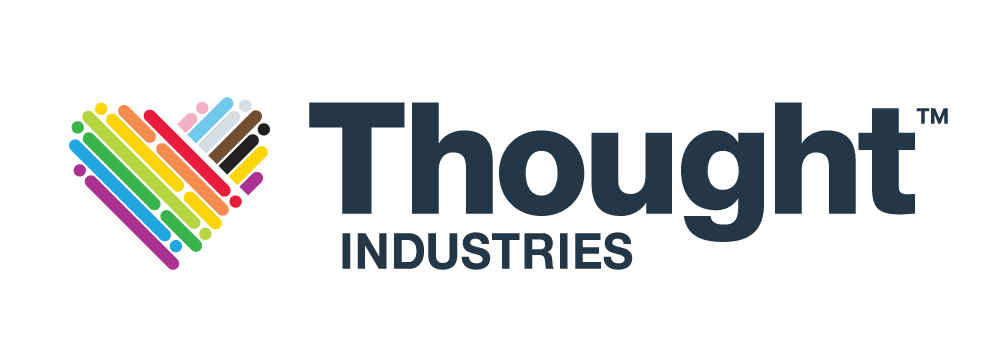When you set out to create a content strategy for developing education, did you build a system and process that solves for both quality and cost? By developing and executing a modular content strategy for your academy, you can provide effective instruction for your learners while saving time and resources. This blog post will offer actionable tips on how to make the most of module creation – so keep reading on!
What is Modular Content?
Modular content is the practice of breaking down information into smaller, more manageable pieces. A content module is a unit of content that can be in the format of video, text, images, and other media. Content modules provide an efficient way to manage elements of how you package your education (learning paths, courses, lessons) without having to re-create entirely new assets.
So, what’s a modular content strategy? We define a modular content strategy as:
Creating individual, educational content assets, intending each one to be an independent building block, or grouping several together in customized learning paths.
For example, a long-form video lesson on customer onboarding could be divided into four modules:
- Module 1: An introduction to customer onboarding
- Module 2: Best practices for customer onboarding
- Module 3: Common challenges with customer onboarding
- Module 4: Concluding remarks
There is so much potential with these four modules! While each of these modules works well and builds upon each other, they can also stand on their own. Module 1 and 2 could be in video format, while Module 3 and 4 might be better as text. Either way, each module would be created with the flexibility that it can be experienced on its own AND as part of the full lesson. This increases both the efficiency of creating content and its overall impact on learners.
A modular content strategy:
- Solves for your learners’ content consumption
- Empowers your learners with content that solves for outcomes
- Allows for more flexible content that can be arranged in a variety of ways
- Accommodates different topics, personas, and roles
But most importantly, a modular approach streamlines inventory management of your content making it much easier to forecast the time and costs of additions, updates, and improvements to your existing assets, content and courses.
Create a flexible content framework
A modular content strategy isn’t something that can be simply added into your existing education creation process. It does require an organizational shift and commitment to evolve the way your education and content teams work today. Modular content will help your team better strategize, create, reuse, and improve content.
Breaking down content into modular pieces allows it to be reused or repurposed across various channels and formats – which leads to cost and time savings in the long run. Not only that, but modular content makes it much easier to add, update, and improve your assets, content, and courses.
When you’re considering what modules to create and which format will work best, it will be important to define learning objectives with each format. Bloom’s Taxonomy is a powerful tool to help develop learning outcomes because it explains the process of learning:
- Before you can understand a concept, you must remember it.
- To apply a concept you must first understand it.
- In order to evaluate a process, you must have analyzed it.
- To create an accurate conclusion, you must have completed a thorough evaluation.
The image below is an example of how you can take the different stages of Bloom’s Taxonomy and map them to the different content formats that you offer. So, if you’re looking to build a module that solves for helping your learners to remember key concepts, a video could be a good format for this. While your formats might map differently than the example shown here, what’s important is that you have internal alignment on the mapping and definitions. You can find more instruction on how to map your formats here.
Remember, the idea of a modular content strategy is developing building blocks. Each module is like a part of a bigger puzzle. Creating a flexible content framework is essential to ensuring that your educational content is engaging and appropriate for multiple courses, formats, and audiences. Take a page out of different instructional design frameworks, but consider a framework that will support:
- Breaking down topics into smaller, manageable components
- Creating different versions of the same material tailored to specific audiences
- Allowing for feedback loops so that you can adjust or refine content as needed
Produce high-quality content
This is key to attracting and retaining customers. Make sure your content is engaging, relevant, and helpful. To maximize the effectiveness of modular content strategies, try brainstorming high-touch, high-quality topics; this could include identifying key topics or questions to be answered, creating clusters of related information, and establishing multiple types of content formats. Modular content is a surefire way to increase the reach of your customer education while simplifying ongoing maintenance- making it an ideal solution for any organization wanting to leverage smart content strategies.
When creating modular content, you should keep two themes in mind: reusable and flexible. A piece of content will need to pass the flexibility test for it to be eligible to be a part of your modular content strategy.
Here are things to avoid:
- Directional phrases and terms. With a lot of video courses, you’ll hear the instructor say “in the next video” or “check out the article below.” While it’s giving the learning some direction, it’s also not giving the video the flexibility to be reused and placed elsewhere.
- Breaking news or trends. While these help make your content feel more exciting or interesting, it will quickly make your content feel dated and require more updates.
Additionally, investing in software to streamline the creation of content – such as templates and automation tools – can be helpful in making the entire process more efficient. And document any processes or standards you are using so that they are easily accessible and understood by contributors.
Define your audience
Like any content strategy, you need to identify your audience’s needs and goals and determine what type of content will best help them achieve that. This can be done through learning personas, which allow you to dive deep and determine their needs, goals, learning styles, and preferences.
Chances are you have multiple audiences, or multiple personas. With an understanding of each audience’s learning personality, developing content to support their success becomes easier and tying it into a modular strategy will help you scale that much more.
Creating educational content for multiple audiences can be a daunting task, but there are some simple approaches to making content accessible and impactful. By taking a modular approach, you can intentionally create content modules that will cover multiple audiences and modules that would be considered audience-specific.
Let’s break this down with a simple modular content example.
Here is a long-form lesson made up of videos and text for customer onboarding.
- Video Module: An introduction to customer onboarding
- Video Module: Best practices for customer onboarding
- Text-Based Module: Common challenges with customer onboarding
- Text-Based Module: Concluding remarks on customer onboarding
But, let’s say we have 2 types of customers – B2B and B2C. Both types of customers have regularly asked for more and better examples to help them onboard. We can build two different lessons by repurposing a few modules and creating B2B and B2C specific modules.
Lesson: B2B
- Video Module: An introduction to customer onboarding
- Video Module: Best practices for customer onboarding
- Text-Based Module: Common B2B challenges with customer onboarding
- Text-Based Module: Concluding remarks on B2B customer onboarding
Lesson: B2C
- Video Module: An introduction to customer onboarding
- Video Module: Best practices for customer onboarding
- Text-Based Module: Common B2C challenges with customer onboarding
- Text-Based Module: Concluding remarks on B2C customer onboarding
Rather than creating eight different assets, we would be creating six – two assets that can be reused and four that would be unique to their intended audience.
Plan for Ongoing Management
As your content strategy evolves, so will your need for resources. By implementing a modular strategy, the management and upkeep of any education you create will be made easier.
Make sure that you move forward with a sustainable way to maintain your modular content library. Without proper management and upkeep, the content won’t reach its full potential – let alone become successful! Being mindful of this fact is key; consider how you can plan for ongoing management or adjust existing plans to adapt to different scenarios.
Whether it’s deciding which topics should receive more attention or uncovering when resources need to be reassigned, these maintenance considerations help ensure that all content you create ends up contributing something meaningful.
Getting Started with Modular Content Strategy
Great, you’re sold on adopting a modular content strategy and mindset! You don’t need to start from scratch. Take note of the educational content that you already have in place and conduct a content audit.
The goal of your audit will be to see what content you have that already meets the requirements of modular content or what content needs to be adjusted for it to be considered modular.
Here are the questions you’ll want to ask:
- Is the existing content up-to-date?
- Can the content be further broken down into modules?
- Would it be possible to use this content elsewhere?
- Does the content accurately reflect current best practices?
- Is the content well structured and easy to follow?
- Are there any opportunities for improvement or expansion?
- Is there enough detail to thoroughly explain concepts?
- Are there any areas where customers may be confused or having difficulty understanding?
The audit should help you start seeing all of the puzzle pieces that you have, all of the pieces that you might be missing, and the pieces that need some reshaping.
The key to any successful content strategy is to understand who you are creating content for, defining your goals and objectives, and creating content that speaks to those needs. It is important to create a framework that can be reused and easily updated. Producing high-quality content will lead to better engagement with customers, while ongoing management of the content ensures that it continuously meets the expectations of users. By following these steps, anyone can create an effective, scalable content strategy that will engage their target audience and provide value far into the future.
Lindsay Thibeault is currently a Customer Education Advisor at SaaS Academy Advisors, a team that coaches and advises leaders who are building, launching, and scaling their customer education and corporate academy programs. Their mission is to help high-growth software companies and Academy/University leaders accelerate their team, department, and company success through industry-changing education and training.




